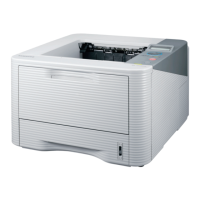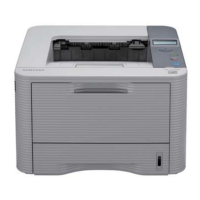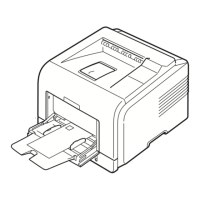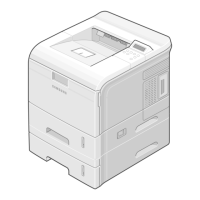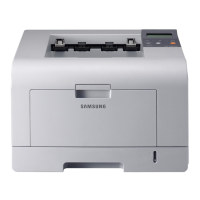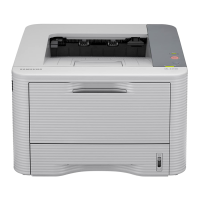
Do you have a question about the Samsung ML-3310ND and is the answer not in the manual?
| Color | No |
|---|---|
| Duplex printing | Yes |
| Print technology | Laser |
| Maximum resolution | 1200 x 1200 DPI |
| Time to first page (black, normal) | 6.5 s |
| Print speed (black, normal quality, A4/US Letter) | 31 ppm |
| Duplex print speed (black, normal quality, A4/US Letter) | 15 ppm |
| Internal memory | 64 MB |
| Processor frequency | 375 MHz |
| Maximum internal memory | - MB |
| Sound power level (standby) | 26 dB |
| Sound pressure level (printing) | 51 dB |
| Total input capacity | 250 sheets |
| Total output capacity | 150 sheets |
| Compatible products | MLT-D205L, MLT-D205S |
| Standard media sizes | 76 x 127mm |
| Compatible operating systems | Windows 2000 / XP (32 / 64bits) / Vista (32 / 64bits) / 2003 Server (32 / 64bits) / 2008 Server (32 / 64bits) /7 (32 / 64bits) / 2008 Server R2 (64bits) Various Linux OS: RedHat Enterprise Linux WS 4, 5 (32 / 64 bit) Fedora 4, 5, 6, 7, 8, 9, 10, 11, 12 (32 / 64 bit) SuSE Linux 10.0, 10.1 (32 bit) OpenSuSE 10.2, 10.3, 11.0, 11.1, 11.2 (32 / 64 bit) Mandriva 2005, 2006, 2007, 2008, 2009, 2009.1 (32/64 bit) Ubuntu 5.04, 5.10, 6.06, 6.10, 7.04, 7.10, 8.04, 8.10, 9.04, 9.10 (32 / 64 bit) SuSE Linux Enterprise Desktop 10, 11 (32 / 64 bit) Debian 4.0, 5.0 (32 / 64 bit) Mac OS 10.3 - 10.6 |
| Envelopes sizes | C5, C6, DL |
| Maximum print size | 216 x 356 mm |
| Duplex media weight | 60 - 120 g/m² |
| Paper tray media types | Bond paper, Card stock, Envelopes, Labels, Plain paper, Pre-Printed, Recycled paper, Transparencies |
| Paper tray media weight | 60 - 163 g/m² |
| ISO A-series sizes (A0...A9) | A4, A5, A6 |
| Maximum ISO A-series paper size | A4 |
| Multi-Purpose Tray media weight | 60 - 220 g/m² |
| Cabling technology | 10/100Base-T(X) |
| Ethernet LAN data rates | 10, 100 Mbit/s |
| Power consumption (off) | 0.4 W |
| Power consumption (standby) | 60 W |
| Power consumption (printing) | 550 W |
| Display | - |
| Maximum duty cycle | 50000 pages per month |
| Standard interfaces | Ethernet, USB 2.0 |
| Weight | 9740 g |
|---|---|
| Dimensions (WxDxH) | 366 x 368 x 252.9 mm |
Highlights environmentally friendly features and printing capabilities.
Compares features across different ML-331x, ML-371x models.
Covers important safety symbols and operating environment warnings.
Provides step-by-step instructions for powering on the machine.
Guides on installing printer drivers on a Windows computer via USB.
Procedure for uninstalling and reinstalling the printer driver on Windows.
Details the menu structure and available options for machine setup.
Information on loading different types of print media and tray setup.
Explains the fundamental steps for printing documents.
Lists available toner cartridge types and their approximate yields.
Step-by-step guide for replacing the toner cartridge.
Guidance on cleaning the machine's interior and exterior parts.
Detailed steps for removing jammed paper from various machine locations.
Guides on setting up a wired network connection and IP configuration.
Instructions for installing printer drivers on Windows, Macintosh, Linux, and UNIX.
Detailed guide for setting up wireless network connections using WPS or manual methods.
Explores features like XPS printing, printing to file, multiple pages per sheet, and poster printing.
Addresses issues like paper jams, feeding errors, and skewing for various media types.
Resolves common printing issues like no output, wrong paper source, and slow printing.
Diagnoses and solves problems affecting print quality like streaks, smudges, and faded output.
